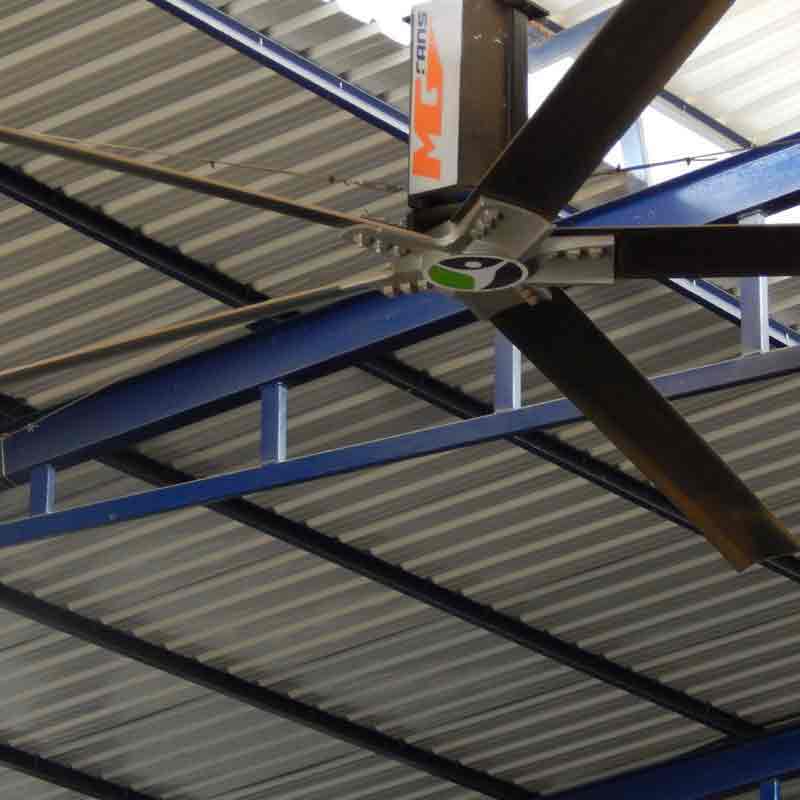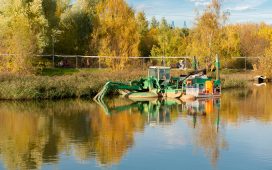HVLS Fans, also known as High Volume Low Speed Fans, are mechanical fans that rotate slowly as they distribute air in large amounts, as the name suggests. Industrial HVLS fans are fast becoming the most-preferred type of fans for most industries, thanks to their efficiency and performance. As a result, they can now be found in most commercial, industrial, and residential spaces across the globe.
What are HVLS Fans?
HVLS fans are industrial-type fans that have a diameter greater than 7 feet. Their size is critical to their effective performance. They are known to move large amounts of air as a result of their long and large fans when in use. The volume of air flows down and horizontally to reach the furthest places in a room. When it reaches another fan, it will be propelled further. HVLS fans come equipped with either direct-drive motors or gearbox motors. With such technology, the fans have significant benefits to the users.
Types of HVLS Fans
There are a number of HVLS fans currently on the market. These fans come with different specifications designed to meet clients’ diverse needs. Some of the top HVLS fans include Titan HVLS Fan, ECO HVLS Fan, XP HVLS Fan, JAN Fan, and TRAK Fan. The Titan HVLS fan is ideal for high performance and versatility, while the ECO HVLS fan is built for efficient and economical movement of air. On the other hand, the XP HVLS fan is ideal for smaller spaces, while the JAN fan is perfect for industrial air circulation. Finally, the TRAK fan is designed for excellent performance in medium spaces.
The Advantages of HVLS Fans
With the superior technology and design incorporated in HVLS fans, clients expect nothing short of top-tier performance. Below are some of the key advantages of these types of fans.
They Improve Air Circulation and Ventilation
The quality of air in a building is critical for the health of the people working in it. Unlike conventional fans, HVLS fans utilize large fans and effective motors to spin slowly and quietly to move large volumes of air effectively throughout the facility. This assists in getting rid of stagnant air, which hosts dust and other organisms that are a danger to employees. The fans come in handy to improve the overall ventilation of the facility, providing clean air for breathing and thereby ensuring the safety of everyone in a facility.
The Improve the Productivity and Maintain Safe Working Conditions
For a company to perform optimally, the environment for the employees has to be conducive. The HVLS fans come in handy to help regulate the temperatures of commercial spaces, providing the right temperature for optimal performance by employees. This will have the overall effect of improving their productivity.
They are Energy Efficient
HVLS fans are designed to use motors that regulate their speed to low. The low speeds produce large volumes of air across a facility. Unlike conventional fans that rotate fast, the HVLS fans are |energy efficient. Therefore, they do not consume a lot of energy for their operation. The HVLS fans also complement the working of a facility’s HVAC system. During summer, the HVAC system will not often operate when the fans are in use, helping save energy.
The Help Cut Down Heating Costs
HVLS fans operate using a process called destratification. They run in reverse, and this causes them to suck air. This phenomenon minimizes the evaporative cooling effect often produced when fans operate in the conventional clockwise spin. Naturally, hot air rises and eventually gets trapped at the top, and cool air flows toward the floor. However, with HVLS fans, the cool air is mixed with the warm air on the floor to give an even temperature across the room. As a result, these fans have the potential to save up to 30% in heating costs, according to research by the National Aeronautics and Space Administration (NASA).
Conclusion
HVLS fans have come in handy to help revolutionize the working of fans in the commercial setup. The fans utilize the latest technology to operate, bringing in several key advantages. The top qualities of the fan are its ability to conserve energy and improve the overall performance of an industry. Those looking to improve the working conditions in their commercial buildings and save costs associated with energy consumption can do away with the conventional fans and adapt the HVLS fans.






